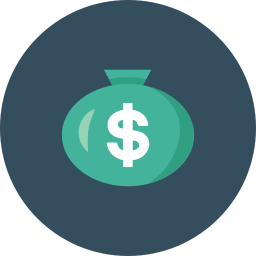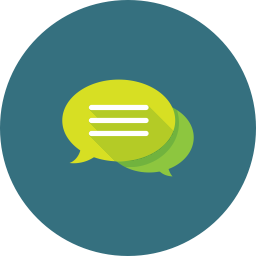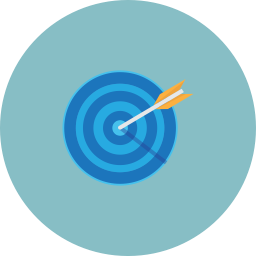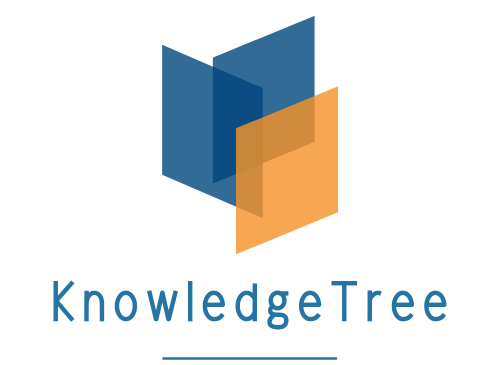Sales enablement is a powerful tool to increase sales rep performance. It helps sales teams to deliver the right message at the right time to engage and advance prospects to close. When salespeople are on the message they convert leads and close opportunities faster.
And the right message could be sales enablement content, training, or other sales enablement best practices. Use these sales enablement resources to build your own sales enablement plan. Want more details or to get your sales enablement plan up and running fast? Contact us and we’d be happy to help.
 Sales enablement is a critical topic for sales and marketing teams. Small improvements to sales team effectiveness can have an incredible impact. Consider a change in your win rate from 25% to 30%. That can be worth millions of dollars to your bottom line. All are driven by sales enablement.
Sales enablement is a critical topic for sales and marketing teams. Small improvements to sales team effectiveness can have an incredible impact. Consider a change in your win rate from 25% to 30%. That can be worth millions of dollars to your bottom line. All are driven by sales enablement.
Sales enablement drives the improvement. Especially today when fast-growing companies hire large numbers of inside and outside sales reps.
Many of these reps are experienced but need to be enabled about your products. Many are less experienced and need to be enabled in not only product expertise but also sales processes.
What is Sales Enablement?
- 4/5 of sales enablement teams guide sales asset usage.
Sirius Decisions, a leading sales, and marketing research firm, has written extensively on the topic. One of their major findings is that sales enablement best practices evolve and differ across companies. The survey also found many key shared elements:
- 78% teams guide usage of sales assets (e.g. collateral like video, presentations, and white papers)
- 73% teams share best practices for sales techniques and tactics
- 71% teams are responsible for creating sales assets that are used in the sales process (e.g. call scripts, demo materials, and classic collateral)
These sales enablement experts also cite the importance of sales onboarding to the sales enablement process. This is especially important for fast growing sales teams that want predictable results. Sirius Decisions also cites the importance of measuring the impact of sales enablement. That drives sales enablement managers to move away from pure activity measures like:
- How many calls did a rep make?
- How many hours of training did a rep have?
- How often was content used in a sales process?
Instead, sales enablement experts are moving to a more nuanced approach. A better approach is to look at the context of these activities:
- How many calls connected with decision makers at target accounts?
- How much of the sales training was retained?
- Which content is most effective at pushing deals forward?
- 4/5 of sales enablement teams guide sales asset usage.
Who Manages Sales Enablement?
Surveys of companies have aimed to find out where the sales enablement function reports into. Just under half are under sales, a third into marketing, and the remainder are a cross-functional set of teams.
It’s no surprise that sales plays such a leading role. Yet the magnitude of marketing’s role as the owner of sales enablement is revealing. It shows how far marketing has come in its focus on “Lead to Revenue”.
That is, instead of focusing just on generating leads that are handed off to sales, marketing recognizes that its strength comes from pushing leads through to close and beyond in partnership with sales. That’s true sales enablement for marketers.
Just under half of sales enablement functions report into sales.
Sales Enablement Challenges for Messaging

Modern sales leaders and marketers have turned traditional marketing and sales enablement from art into a science. They’ve done it via rigorous testing, repeatability, and iteration on enablement initiatives.
For instance, they’ve tested marketing content at the top of the funnel to determine what resonates with prospects. Campaigns driven by email or social, for example, can be tightly focused on particular messages. The results can then be measured and tuned.
But when prospects are handed off to sales there’s a visibility cliff. Marketing no longer has tight control over the messages that are sent to prospects. And although there are outreaches from marketing at the bottom of the funnel, the primary message is now carried by the sales team.
At the same time marketing also loses insight into which messages are used and work in the sales process. Each communication must resonate. Otherwise, you end up with a large volume of opportunities that stall and fail. It’s no wonder that 58% of opportunities never change from the status quo.
That’s where sales enablement has become imperative. It’s not enough to simply produce content and sales sheets and training, hoping for the best. Rather, you need an ongoing sales enablement plan to ensure that your sales team is equipped with the best resources and messages to communicate the value of your offers.
Building A Sales Enablement Plan
Now that we’ve identified the importance of the sales enablement function, let’s look at the key elements of an effective sales enablement plan. Marketing, product marketing, sales leadership, and a dedicated sales enablement team will often work together to train and equip salespeople. Here’s a good set of categories to focus on for your sales enablement plan.
Your Sales Enablement Goal
Sales enablement is too important to go unmeasured. When even the smallest improvements in the funnel can drive major results on the top line, you need to measure aggressively. That means tracking how sales enablement programs influence conversion rates along the entire lead to-revenue process.
By tying sales enablement programs to measurable sales results you can ensure that sufficient attention and budget are devoted to these programs. Select metrics that have clear connections to revenue:
- Lead conversion
- Opportunity creation
- Deals closed
- Upsell and retention rates, etc.
And then look at how your programs influence these metrics. Linking sales enablement metrics to the most important data points in your company is a great way to get more attention and focus from senior individuals in the organization.
Measurement is not easy without appropriate tooling to measure the connection of sales enablement programs and deals won, but the more you are able to connect the two the more you’ll be able to justify and improve your sales enablement activities. That helps to ensure that sufficient attention and budget are devoted to these programs. And it keeps you and the team accountable to what matters most — driving revenue.
By tying sales enablement programs to measurable sales results you can ensure that sufficient attention and budget are devoted to these programs.
The Sales Enablement Definition

Let’s circle back on a definition of sales enablement to move forward with our plan. We can define it as:
A set of processes, tools, collaborations, and guidance that helps a company to drive more revenue.
I think it’s critical to think of sales enablement more broadly than it traditionally has been. What is the “sales” that you are trying to enable? Is it the sales team, or is it sales in the sense of revenue? It must be the latter. Why? Because so much of revenue comes back to retention, upsell, and other activities that aren’t confined to a traditional ‘hunter’ role.
Let’s look at best practices for sales enablement in each of these components. The first step, once you’re armed with your sales enablement goal is to map out your entire sales process. That means the full sales lifecycle. Not just leads to revenue. It’s before leads. It’s post-sale. It’s contracting. It supports. It’s every engagement a customer has with your company that matters. Every interaction influences their decision to spend money with you.
When you have that defined customer journey and you have measurements that you can apply along the journey, you can start to plug-in process, technology, collaboration, and training that can improve your sales, revenue, and enablement.
Sales Enablement Processes
Your sales team needs repeatable steps that can help guide prospects from initial interest through to close. They can’t depend on ‘cowboy’ like approaches to selling. Instead, by forming processes you can measure and understand why deals break down, where interest gets lost, and more.
Sales enablement processes can be a collection of sales tactics, messaging, and education. They may involve using a standard set of processes, like Snap Selling or the Challenger Sale. These methodologies can help structure a process for you. But ultimately, sales enablement is most effective when it is matched with your own specific corporate needs.
That means a thorough evaluation of each step in your sales process to see where salespeople trip up and customers stall. By evaluating the full dynamic of your buyers, you can better understand at what points you need to make changes or reinforce best practices.
Todays harried buyers filter out sales messages. How do you make sure yours gets through to buyers?
Sales Enablement Technology

Technology is not the savior for your sales enablement efforts. But it can be a critical way to reinforce or rapidly extend the impact of your sales enablement plan. That’s because tooling by its very nature focuses on repeatable steps and the elimination of actions that add little value or require higher-level thinking.
When looking back at your customer journey, do it with an eye toward efficiency and effectiveness. Are there steps in your process that are mundane and avoidable? Let’s say your outbound sales team calls into a hundred people a day. If they have to look up the next person to call, find their phone number, and dial it, all before they speak to someone, that can take 1-2 minutes. Multiply that by 100 and it is more than 2 hours of wasted time.
The same applies to other critical sales enablement elements, like content and messaging. Salespeople spend up to 30% of their day building or finding content. If the content that would advance a deal were pushed to a rep where they work, they’d be more likely to use it. That’s sales enablement tooling that makes reps more efficient and effective.
Sales Enablement Collaboration
As mentioned above, it’s critical to think of sales enablement as a holistic story. That is, your finance and contracts department can have a major impact on the customer journey. That’s where you can truly shake up your sales enablement process — making your entire company a pleasure to work with.
How do you do that? It again comes back to mapping the customer journey. But being sure to do so in the broadest sense possible to include legal, finance, support, and all other sales enablement influencers that are outside of sales.
Then the next step comes down to coordinating efforts across these teams. They almost universally want to help drive sales. They just don’t know how. So sales enablement takes on a coordination role — coordinating teams across the organization to more effectively support your revenue goals.
Sales people need to have access to relevant content in the heat of the moment.

Sales Enablement Training
The last element to point out is around training. Your customer facing teams are among the primary ways that your customers interact with the company. They need to be knowledgeable about your products, their value, cost, challenges, success stories, and other key elements.
That requires training and ongoing reinforcement of their learnings. It’s not enough to simply have an onboarding session and hope that the team will remember. Stats show that the bulk of training is forgotten mere weeks after training happened. Instead, it’s significantly more effective to push training material to reps as they need it — based on the sales context they are in.
When sales training material is pushed to reps and other customer-facing employees “just in time” they are much more likely to use it and it’s more likely to be valuable. And as you build up sales enablement training, focusing on practical elements more than esoteric elements can further reinforce its use.

Combine these Sales Enablement Best Practices
When you combine these various sales enablement best practices, and aggressively measure their impact, you can quickly help all teams to be more effective and drive more revenue.

